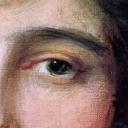Yahoo Answers is shutting down on May 4th, 2021 (Eastern Time) and beginning April 20th, 2021 (Eastern Time) the Yahoo Answers website will be in read-only mode. There will be no changes to other Yahoo properties or services, or your Yahoo account. You can find more information about the Yahoo Answers shutdown and how to download your data on this help page.
Trending News
Would Bellini's "Feast of Gods" be considered a humanist painting?
If anyone could tell me if Bellinis feast of Gods would be considered a humanist painting and why or why not it would be greatly appreciated!!
2 Answers
- Olive SorceressLv 71 decade agoFavorite Answer
Humanist
1. Subject is based on poem by an ancient Roman, Ovid. Renaissance humanism, for the first time in centuries, reached back to the ancients. Prior to this subjects in paintings were portraits, histories, and religious subjects.
2. Gods are shown in human form behaving as human beings would under the drunken feasting circumstances. The painting is showing deities in a humorous situation that Christianity would never allow for its saints, angels, Jesus or God.
3. The human figures even though they are gods are shown as idealized. Their godly attributes are sitting next to them: Zeus has an eagle, Bacchus has grape vines, Mercury has a caduceus, Neptune a trident and Priapus has his bulge.
4. This is a secular work of art for private and not public display. Humanism emphasized the secular over the religious.
- angela lLv 71 decade ago
Humanism was a cultural and intellectual movement of the Renaissance that emphasized secular concerns as a result of the rediscovery and study of the literature, art, and civilization of ancient Greece and Rome.
Yes, Bellini's paintings would definitely fall into this category. Firstly, its subject-matter (which Humanists greatly admired) was the culture of ancient Greece of which mythology - the worship of the Gods was important); secondly, the people in the scene and the scene itself - - not flat or unreal, but a real looking woodland, are all shown as real people with individual personalities (in Medieval times, the people all looked the same: see the people depicted in the Mosaics of Ravenna). With belief in Humanism and Renaissance painting were not concerned as people had been in Medieval times with this life merely being a preperation for the next. But Man at the center of all things, during his lifetime. So the fact that the subject matter is mythological not religious is central to Humanist believes.
I hope this of help.



